My Ten Best Steak Buying Tips For the Home Cook
Many visitors asked me about buying steaks, so I started putting together some tips, describing various cuts and what to look for when purchasing a good steak.
I asked Jimmy Kerstein, someone who has worked forty years in the meat industry and is the author of The Butcher’s Guide – An Insider’s View to Buy the Best Meat and Save Money.
Between his incredible depth of knowledge and some additional research of my own, you’ll enjoy these 10 tips next time you are at the market looking to pick up a steak for supper. You may also be interested in How to Grill a Good Steak.
#1. Choose the right steak for the right meal before going to the market
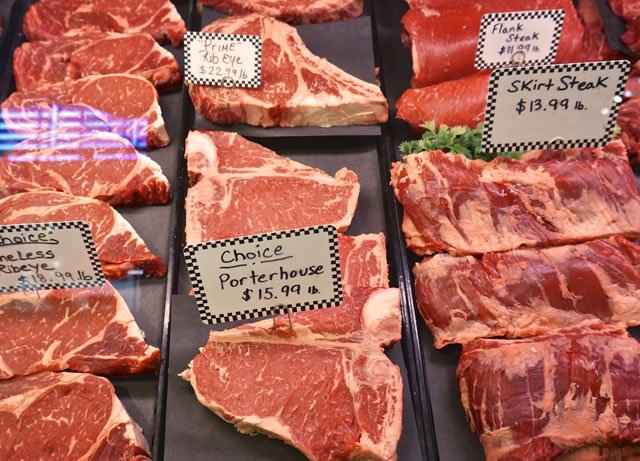
Whether you buy your steaks at the supermarket or a gourmet butcher shop doesn’t matter. If you want to learn about meat, how to purchase it, what’s a good buy today, and how to cook it, start a relationship with your butcher. These folks know what you don’t and will gladly help if you ask.
My local butchers tell me customers don’t use their knowledge and experience. They have preconceived ideas of what a good steak should look like and buy an inferior product.
A good steak is expensive, so why not ask the expert who handles the products daily what they think is a good bargain? You may be surprised by getting better cuts for less money.
#2. Get to Know Your Butcher
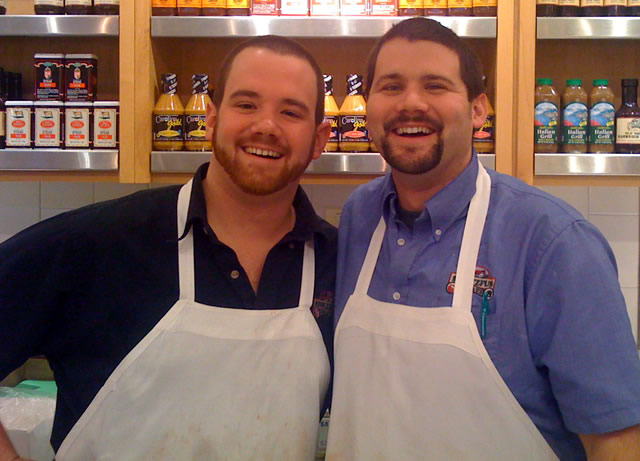
End All The Confusion
Knowing the type of steaks you’re considering buying before you go to the market is a good idea. At least you should know how much steak you’ll need, how you will prepare them, and your budget. There are so many great cuts available these days, and depending on how you serve the meat may influence what you purchase.
Steaks come in all shapes and sizes, and depending on the section of the cow they originate from can significantly influence price and cooking technique. According to Jimmy, “You may want to choose a cut like Flat Iron or Flank Steak if you are serving a larger group.
Consider buying a thicker, multiple-serving premium steak such as a Porterhouse or Bone-in Rib-Eye. Return the sliced steak to the bone before serving. It is a lovely presentation for a small dinner party. Thicker boneless cuts such as New York Steak also make great multiple serving steaks.”
Cheaper Cuts Only A Butcher Knows
There are cheaper cuts like Tri-Tip, Ranch, or Sirloin that can be great for the grill if you can find them with enough marbling. We buy these marinated Tri-Tip steaks that my girls love at Wegmans, and I can’t seem to overcook them.
For special occasions with a big crowd, I’ll purchase a whole tenderloin, roast it in the oven, slice it into thin steaks, and serve it with horseradish cream sauce. Always a crowd favorite.
There are many more steak options on a cow than we know. And then there are the names. You may know it as a rib-eye, but it’s also known as a cowboy steak, Spencer steak, Delmonico steak, market steak, or beauty steak, depending on whether it’s bone-in or what part of the country you come from.
That same rib-eye Delmonico is also the name of a cut from the boneless chuck-eye steak. Confusing? Yes, get to know your butcher and ask him for advice on what to buy for the crowd you’ll be serving and how much you want to spend.
#3. Learn your cuts of beef and look for “value” cuts.
Going hand in hand with choosing the right steak is learning the different parts of the cow and how to distinguish between primal cuts so you can ask your butcher knowledgeable questions and understand their responses. It’s a good idea to know that the chuck is the shoulder area at the front of the cow, the rump is at the back, and the rib and loin areas are in the middle.
As you can imagine, the chuck and round are locomotion muscles that do a lot more work than the loin and rib muscles, thus making them tougher cuts of meat, meaning they are better for braising and stewing. The more tender cuts come from muscles that don’t work as hard. This includes the short loin and tenderloin muscles.
Then there are in-between parts of the cow that can include tender cuts and tougher cuts depending on where they sit. For example, in the rib section, you have tender rib-eyes steaks perfect for grilling, but short ribs must be slow-cooked to make them tender.
Head to the back of the cow, and you have a section called the sirloin, but it would be good to know the difference between the top sirloin and the bottom sirloin. The top sirloin is more tender than the bottom sirloin but has less flavor.
Top sirloin is leaner than bottom sirloin and, if prepared and cooked correctly, can be a less expensive alternative to the more expensive short loin steaks. The bottom sirloin includes the tri-tip steak, a flavorful triangle cut weighing around two pounds.
Once, it was a cheap steak to buy, but because of its popularity, it has increased in price and is also more difficult to find.
As you can see, the more you know about the various cuts of beef associated with the different beef primal sections, the easier it will be for you to identify bargains at the market.
Suppose you want to see where these cuts come from on the cow. In that case, I recommend you check out my post called Beef Fabrication Video, where you can see Ph.D. butcher Dr. Gregg Renfrow fabricate a beef carcass.
#4. Buy the best grade of meat you can afford
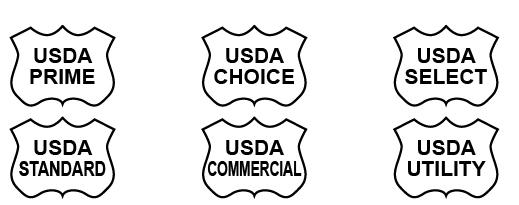
Most of us rarely have the opportunity to buy and taste Prime beef. That’s because only 1 – 2.5% of all beef processed in this country is good enough to be graded by the USDA as Prime. The inspector takes in all sorts of things when grading for Prime, but as a consumer, we mainly look at marbling, that network of fat traversing throughout the meat.
Given a choice at the market between a perfectly lean piece of meat and a Prime cut with lines of fat running through it, many of us would pick the lean steak. But the marbling gives a Prime cut the incredibly rich, juicy, tender flavor and texture we seek.
Just because Prime isn’t that readily available or in a price range we can afford, there is nothing wrong with Choice. There are different Choice grades, so you may want to shop where they consistently buy beef at the higher end of the Choice grade. How will you know? By getting to know your butcher and asking.
#5. When possible, buy your steaks from the butcher’s counter instead of the pre-packaged section

Supermarkets typically have both a case where they sell unpackaged meat and a refrigerated section where they sell pre-packaged selections. From my experience, the case holds the premium grades and the private labels or store brands.
The significant advantage of buying from the case is working with a butcher or salespeople who can help you select your steaks. If you need to become more familiar with cuts of beef, grades, or the best way to prepare a particular steak, they will be informed enough to give you the correct answers.
You can also ask them to take a piece of meat out of the case so you can look at both sides, give it a smell, check for moisture, look at the grain, and ensure there are no brown spots. You can’t do this when it’s sitting on a piece of Styrofoam under a layer of plastic wrap.
The pre-packaged steak may look great on the side you see, but you only know what’s on the other side once you get it home and open it up. And then it might be too late.
Premium steaks are getting more expensive daily, so don’t be afraid to ask your butcher to check out the meat you purchase. This goes for steaks and is just as crucial as any fish you buy.
Select has the least marbling, making the three less tender or tasty. More importantly, you will pay less for Choice than Select, so spend the extra dollars on Choice if you can. Nothing is worse than chewing and chewing through a tough, flavorless piece of meat.
#6. Color, Smell, and Touch Matter
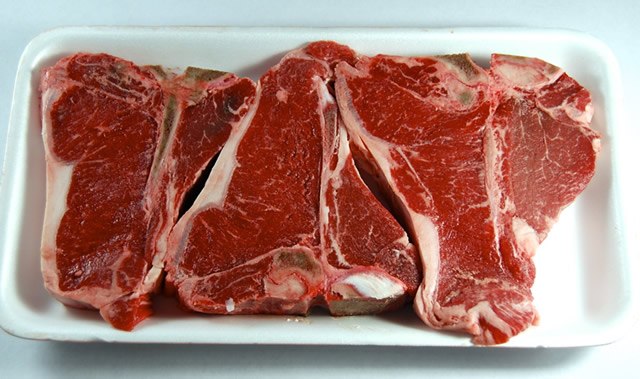
Color – You’ll notice a considerable color difference if you go to a store selling grass-fed beef and meat from cows fed grain and finished on corn. The grass-fed beef will be darker red than a well-marbled grain-finished steak. Go to Whole Foods or Wegmans, look at the grass-fed and grain-fed steaks side by side, and you’ll notice a huge difference.
I learned in Jimmy’s book, “Freshly cut meat has a nice bright appearance or “bloom” when first cut and packaged. When the freshly cut surface is exposed to oxygen, the myoglobin in the meat makes red meat turn a bright red color.”
Unwrapped beef in the case will oxidize faster and turn from bright red to brownish red as the day progresses. That doesn’t make it bad. I know a local butcher from a high-end meat market who explained that he couldn’t sell steaks if they turned brownish-red at the end of the day.
In his opinion, these are as good as the cherry red steaks put in the case earlier in the day and maybe better because they have minor aging. He would sell them to his favorite customers at a lower price, and the rest would end up in ground beef.
The marbling on grain-fed beef should be white or creamy. I was surprised when I first saw the color of fat (marbling) in grass-fed beef. It was sort of yellow. There should be no brown spot in the fat or on the edges.
Smell – If the meat you buy smells sour or has an ammonia odor, it’s not fresh. Don’t Buy It!
Fresh steaks should be slightly meaty but never stale or off smelling. It’s impossible to tell how a pre-packaged steak smells, but if you take it home and it doesn’t smell right, bring it back immediately to where you purchased it and let them know. You are doing them a favor because they don’t want to be selling bad meat.
Touch – this one is difficult until you get the beef home. You can’t touch a pre-wrapped piece of meat, and most butchers aren’t let you put your hands all over their steaks. However, when you get your steaks at home, they feel sticky to the touch; there’s a good chance they are past their prime and should be returned to the store.
#7. When buying pre-packaged steaks, take a careful look at the package.
Only some supermarkets have a butcher counter where you can purchase unpackaged steaks or ask the butcher to cut something special. In these situations, you’ll likely find pre-packaged steaks wrapped in plastic on Styrofoam trays. There is nothing wrong with purchasing steaks this way as long as you pay attention.
If you find the tray has excess liquid, this may indicate the meat has been frozen and then thawed, or it could mean the meat has been sitting around too long in the case. You also want to look at the packaging.
If the Styrofoam tray is cracked or the plastic wrap is torn, please look at another package for purchase. Do the store a favor and bring the broken package to their attention so they can repackage it.
The next thing to do is check the label for the “sell-by” date. This is when a store must sell the meat or remove it from the display. According to Jimmy Kerstein, some stores may not call it the “sell-buy” date but use other more confusing descriptions like “pack date,” “suggested use,” “freeze-by date,” or even use freeze-by” date.
Ask the butcher or store manager if you don’t understand these terms.
You never want to purchase steaks past the sell-by date, and if you find steaks that appear to look older than fresh-looking steaks but have the same sell-by date, it may be the steaks were “repackaged and re-dated,” a big no-no and something you should bring to the attention of the store.
#8. Marbling Matters
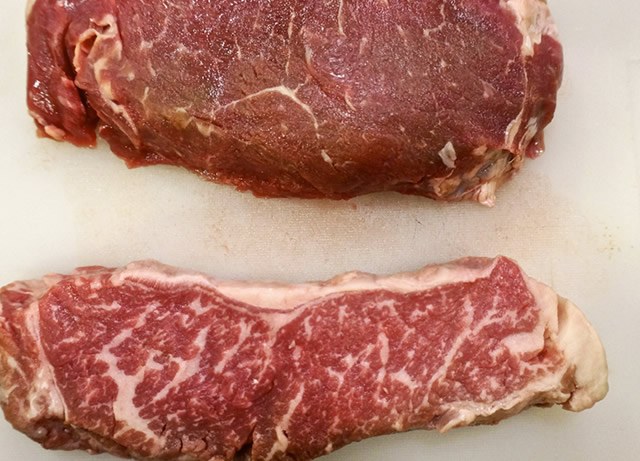
Whether you’re talking about grass-fed or grain-finished beef, most experts will tell you marbling is where the great steak flavor comes from when choosing steaks. One of the significant differences between a USDA Choice Grade and USDA Prime (top grade) is marbling.
According to Jimmy Kerstein, marbling gives steaks both flavor and tenderness. He describes marbling as “the dispersion of fat within the lean. The best marbling is small flecks of fat evenly spread across very fine textured lean.”
In The Complete Meat Cookbook, Bruce Aidells and Denis Kelly say that consumers should judge and “look for the intramuscular fat, or marbling, which determines juiciness and tenderness.”
And later, in Bruce Aidells The Great Meat Cookbook, he describes his “Ideal Beef” as “some beautifully marbled New York strip steaks” coming from grass-fed Natural Beef raised in California.
Mark Schatzker, the author of Steak, talks about the “two handpicked rib eyes” “sitting on that plate were marbled enough to grade high Choice,” and “the flavor that burst over my tongue with each chew was comparable to a symphony, but any attempt to describe the individual notes would sound pretentious and be meaningless. The steaks he described came from a ranch in Idaho and were organic grass-fed.
It is important to note they all say marbling is important, but how it develops is just as important. Some will disagree and say marbling is marbling, and whether it comes from a heavy grain diet or from extra time in grass pastures, fat is fat.
I can’t disagree more.
The problem for the consumer is how do we know where the beef we buy comes from, what was it fed, how many hormones and antibiotics it was given, and at what age it went to slaughter?
You could ask your butcher, but I’m guessing he or she would have no idea. The other problem with buying incredible steaks that are as flavorful and tender as described by these authors is cost and availability.
Today’s consumers want readily available beef that doesn’t cost too much. I can buy Prime New York strip steaks at Costco for less than $14 a pound. Are they good? Yes, but how would they compare to these other steaks?
There is much more to this discussion of marbling and how it affects the flavor of the steaks you purchase. I suggest you do your own research by reading these authors’ books, finding articles online about this subject, and trying different steaks from various sources to see what steaks taste best for you.
#9. Don’t Judge a Steak By the Name of the Beef
In today’s market, there are a lot of names given to beef that you want to become aware of to know what you are buying. For example, you’ll want to know the difference between “Natural Beef” and “Naturally Raised Beef” and everything else.
Then there are all these made-up names given by big companies to give unimpressive sounding “No Roll” beef fancy sounding names like “Butcher’s Prime” or “Top Choice Select.” These names mean nothing; unless you ask the butcher what you are buying, you have no idea what you are getting.
All meat sold in the United States is (or should be) inspected by a USDA inspector, but that doesn’t mean it is all “graded.”
When it is not graded, it is called “No Roll.” Did you know around 40% of processed beef is ungraded?
This is the beef that ends up in many supermarkets around the country sold with “fantasy names” like the ones mentioned above. It will be cheaper but most likely less flavorful and less tender.
If your budget can afford it, I suggest you stay with meat that the USDA has graded. Look for USDA Prime, USDA Choice, or USDA Select. Some companies will give brand names to USDA Choice, but it will be marked on the label. READ your labels!
Organic, Grass-Fed, Naturally Raised – With so many of us looking for healthier choices in our steaks, there are now new names we have to be aware of. USDA Certified Organic Beef has strict guidelines, including it can only be fed organic feed and cannot be given hormones or antibiotics.
It doesn’t mean the cow will never spend time in a feedlot or be finished on organic grain. For that, you may want to look into Certified Organic Grass-Fed beef. See what I mean about confusing.
It gets fascinating when you speak of “Natural Beef.” The USDA states, “The meat cannot contain any artificial flavorings, colorings, ingredients, or chemical preservatives, and it can be processed only minimally.” It says nothing about the stuff put into the feed to keep the cows healthier, grow faster, and are processed minimally. What the heck does that mean?
As Bruce Aidells says in his book The Great Meat Cookbook, “Allowing raw beef to be labeled “natural” is as meaningless as allowing bottled water to be labeled “cholesterol-free.” It doesn’t mean anything.
However, if beef is called “Naturally Raised Beef,” the USDA defines it as coming from cows raised entirely without antibiotics or hormones. Again READ the labels!
Remember, every time a beef producer does something special to obtain one of these certifications, it will cost you, the consumer, more money. This means it’s extra important to learn everything you can about these different names, read the labels, and talk to your butchers so you know you are getting what you pay for.
#10. Supermarket Steak Specials – Read the Large Print Ads
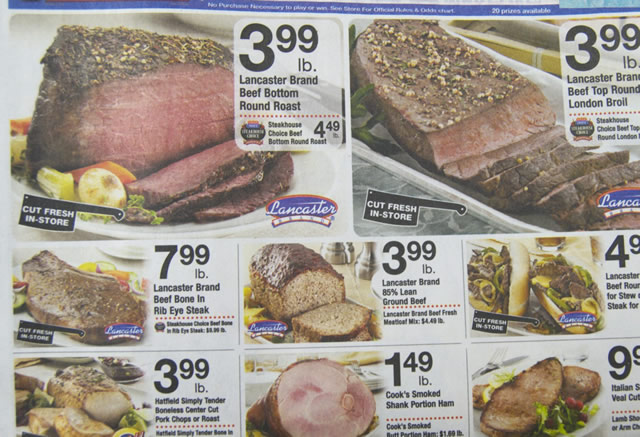
Whether we like it or not, most of us find numerous supermarket flyers in our weekly mail. Often I throw them in the recycle bin, but it’s not a bad idea to check them out, especially if you know what to look for and take advantage of what’s being offered.
Like all products, the price of steaks goes up and down based on supply and demand. During the summer, when everyone is outside grilling, the price of premium steaks like strip steaks and rib eyes go up, so if you see a special at the market in the springtime. You have room in your freezer; it might be to your advantage to grab a few, vacuum-seal, and throw them in the freezer for the day you want to grill up some steaks.
According to Jimmy Kerstein, author of The Butcher’s Guide – An Insider’s View to Buy the Best Meat and Save Money, here’s how it works. Supermarkets offer weekly ad specials based on what they can buy from their meat packers at a lower cost. The time of year, weather, and what’s hot in cooking magazines and TV shows can influence the demand for specific beef cuts.
If the meat packers are sitting on too much sirloin, they may offer it to the supermarkets at significantly reduced prices, allowing them to have those large print ads designed to get shoppers into the store. According to Jimmy, these prices are offered with little or no markup with the idea once you’re in the store, you’ll be purchasing enough other stuff to make up for the “loss leader.”
Retailers refer to people shrewd enough to choose only the loss leaders to stock up on as “cherry pickers.” You can choose the best cuts from the display as you learn how to select cuts. You can learn to become a cherry picker with a butcher’s eye for quality.
Jimmy offers another great “cherry picker” tip in his book. Wait until late in the day on the last day of a big meat sale and head on into the market with coupon in tow. Often the store will be out of what’s on sale, but they’ll offer you a “rain ticket” just to keep you happy.
Now you have an extended time to purchase steaks you like at reduced prices. Doing it this way, you don’t even have to freeze the steaks.

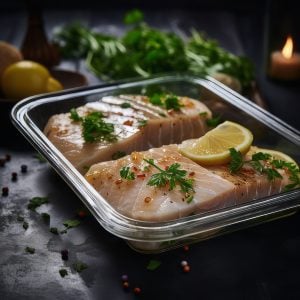
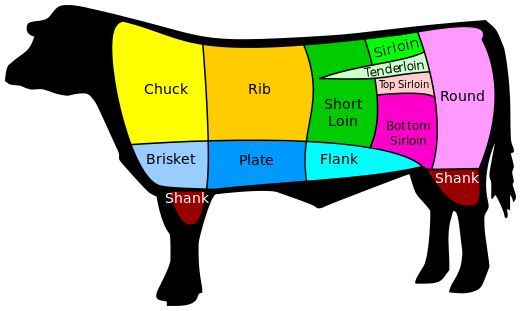
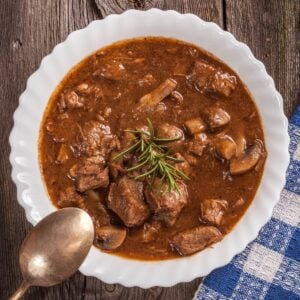



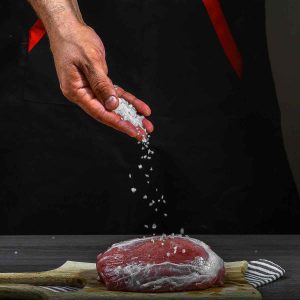
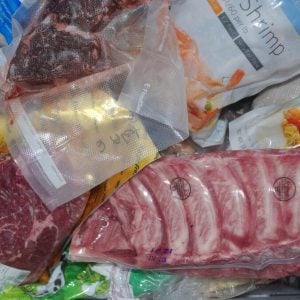




32 Responses
Lot of great information here. Thank you for the steak buying tips.
You are very welcome Jake.
Thanks for the great advice. I was not aware that steak was graded in that manner.
Interesting and useful advice. Now, I would appreciate your suggestion about COOK those beautiful **RIBEYES**
Working on a list of cooking suggestions for Rib Eyes and all these other steaks. Please check back Sergio.
I have been a Butcher for ten years, and whoever wrote this blog is right! Us Butchers are more than happy to make a customer happy. You wouldn’t believe the stuff that happens behind the counter. But I must say, if you are nice to your local Butcher, they will be nice to you…..Keep That In Mind The Next Time You Think About Being Rude to Your Local Butcher;-)
this was very informative and answered my question was which are the best day to buy within my price range. I will certainly side when I can and maybe once or twice a year I can get prime.
The advice you gave me was excellent. It made for the best steak ever!
It was the best steak I ever bought
SAM THE BUTCHA’s: remarks ( at the start of the reply column) about being nice to your local butcher irritates me no end. Do we have to kiss everybody’s butt just to get decent service nowadays? I just want my butcher to give me DECENT MEAT because I pay handsomely for it, and he needs to remember without customers; he doesn’t eat. I don’t want to be his best friend !!! My going there should be sufficient reason for him to appreciate my custom! Sam, have the fortitude to mention the location of your shop so that I can avoid it like the plague. I don’t like your threat of what you might do to my meat should I not treat you like royalty. Coz Egberts Australia !
Coz, couldn’t disagree with you more. I find getting to know the people who provide me with ingredients I cook every week makes a difference and how hard is it to be nice and treat your merchants with a little respect?
Thanks for the advice in this article, nice. I live in Ireland and watch many food shows from here and in the US. I have become interested recently in making great burgers. I have seen Americans mentioning chuck steak as a great cut for burgers. I am a little confused about asking a butcher here about this cut, as your article and others say that the chuck is tough and good for slow cooking. Is there a part of the chuck that’s good for burgers or is it a different part of the cow? Any advice on this would be great. Thanks.
Great question Patrick. If you go to your local butcher, if they are not buying chop meat in bulk for burgers, they are probably using scraps and trimmings for their burger meat. I have no idea what parts of the cow are used in fast food burgers and frankly, I really don’t want to know. Chuck steak is a great cut for making burgers and yes it is a tougher cut than filet but the meat is ground up, the ultimate tenderizer. More important is the fat ratio in the beef and that is a personal preference. Some people who are watching their weight like their burgers made with lean, low-fat beef but to me, they have no flavor. I read their are some restaurants using 60%/40% mixtures with 40% fat. Now that’s going to be a juicy burger! The question I have and will have to research or would appreciate someone responding to, how can you determine the percentage of fat in a cut of beef? If I buy a chuck steak and grind it up myself, how do I know the fat percentage?
“I can buy Prime New York strip steaks at Costco for less than $14 a pound. Are they good, yes but how would they compare to these other steaks?” You say they are good, but your question implies they are not as good as other stores prime. well, what is it?
Joe, I don’t think I was implying anything but asking how would the steaks I purchase at Costco compare to the steaks Mark Schatzker wrote about in his book on steak. My experience with Prime cuts of steak is limited because of both cost and availability so I urge readers to try for themselves with what they can get their hands on. Also, everyone’s personal tastes are going to be different than mine. It doesn’t matter what I like, but what tastes best to the person eating the steak.
Check out the bbq sauce on the shelf behind them. That stuff is the bomb or pork.
I’m guessing bdad you are referring to Tip #2 with two of my favorite butchers. What brand is that?
You stated there were several classes of choice. What are the classes and how would one identify each. Great article and a lot of very good information. Will be my weekly reading this week, so I can be better educated.
Not sure of the various classes of choice but will see what I can find out. If there are any butchers or meat specialists who know the answer to this, please let us know.
I really liked the diagram of what meat came from where. I’ve never really known what parts come from where. I knew where the rib was though because it’s easier to know where the bones are. It’s also my favorite part. I shouldn’t have looked at this before lunch! Thanks for the info!
WOW,it’s amazing to know.I seriously don’t know how to buy the best steak.thanks,Buddy!!hope it will be my next new experience. 🙂
We love rib-eye, and when we lived in The Netherlands, i bought it many times.
We moved to Thailand where i bought 3 times rib-eye, but no more.
Just a bit brown on the outside and red on the inside.
When i did that here in Thailand, you could hammer it under your shoes and walk 10 years on it.
I think they gave me the short rib right??
But, in my opinion, they looked the same as the tender and juicy ones in The Netherlands.
UUUHHH, do i have to buy new glasses???
louise
I’m not sure about them looking the same, I guess it depends on packaging but wow, they are from completely different parts of the cow and are cooked completely different. It might be interesting if you cooked what they are calling rib-eye like you would short ribs and see how they turn out. Not that you want to pay rib-eye prices for short ribs.
My brother recently started working at a butcher shop and it has got me fascinated with finding the best meats I can. You mentioned that it doesn’t really matter if you get your steaks at the supermarket or a butcher shop, as long as you have a good relationship with the butcher. I will definitely use my newfound knowledge to see what each place has to offer!
Personally, I think you are going to find a wider variety of meats at a local butcher and in some cases you may find better quality but that really depends on where you are geographically. I find some fine meats at my local Costco but have no relationship with any of the meat cutters which makes it difficult when I have questions. I know the meat buyer at our local Farmer’s Market and can ask him just about anything pertaining to meat cuts and how to cook them. I can also ask where the meat came from, it’s grade and what he or she recommends. I find that invaluable when shopping for meats to cook and serve my family.
Not many people realize that there are different steaks that are more fit for different meals, so it is great to see your article acknowledge that. After all, if you’re planning to have some steak and eggs for breakfast then that is going to be a very different kind of meat than what you’d want to eat for dinner. If you’re not sure about what steak to get for what meal then it might be helpful to get some advice from the butcher until you can figure it out on your own.
I never took into account that good meat isn’t just about what it looks like. My grandpa is looking to hire a home delivery meats service since going to the store isn’t as convenient as it used to be for him. I think I’ll talk to him about not buying meat just by looks.
I am planning to buy some steak from a local meat shop for the football tailgating party I am throwing in a few weeks and I want to make sure that I choose quality meat. You make a great point that freshly cut meat will have a bright red color and this is a great way for me to see if the meat is fresh when I buy it. Also, I did not realize that smell matters and I will ensure that the meat does not have an ammonia or sour smell when I purchase it. Also, I think that asking the local butcher for recommendations at the store will give me peace of mind that I am choosing the best meat.
Great article like this require readers to think as they read. I took my time when going through the points made in this article. I agree with much this information.
Thanks for sharing yummy & healthy ideas for buying steak. This is one of the best articles I have crossed.
Thank you for explaining how it’s good ask your butcher for advice for different cuts of meat. My husband and I are thinking about going to the butcher to get some steak for a dinner date night. I’ll be sure to share this with him so we can talk to the butcher and start building a good relationship with them.
Hi Olivia, that’s great. Thanks for letting me know.